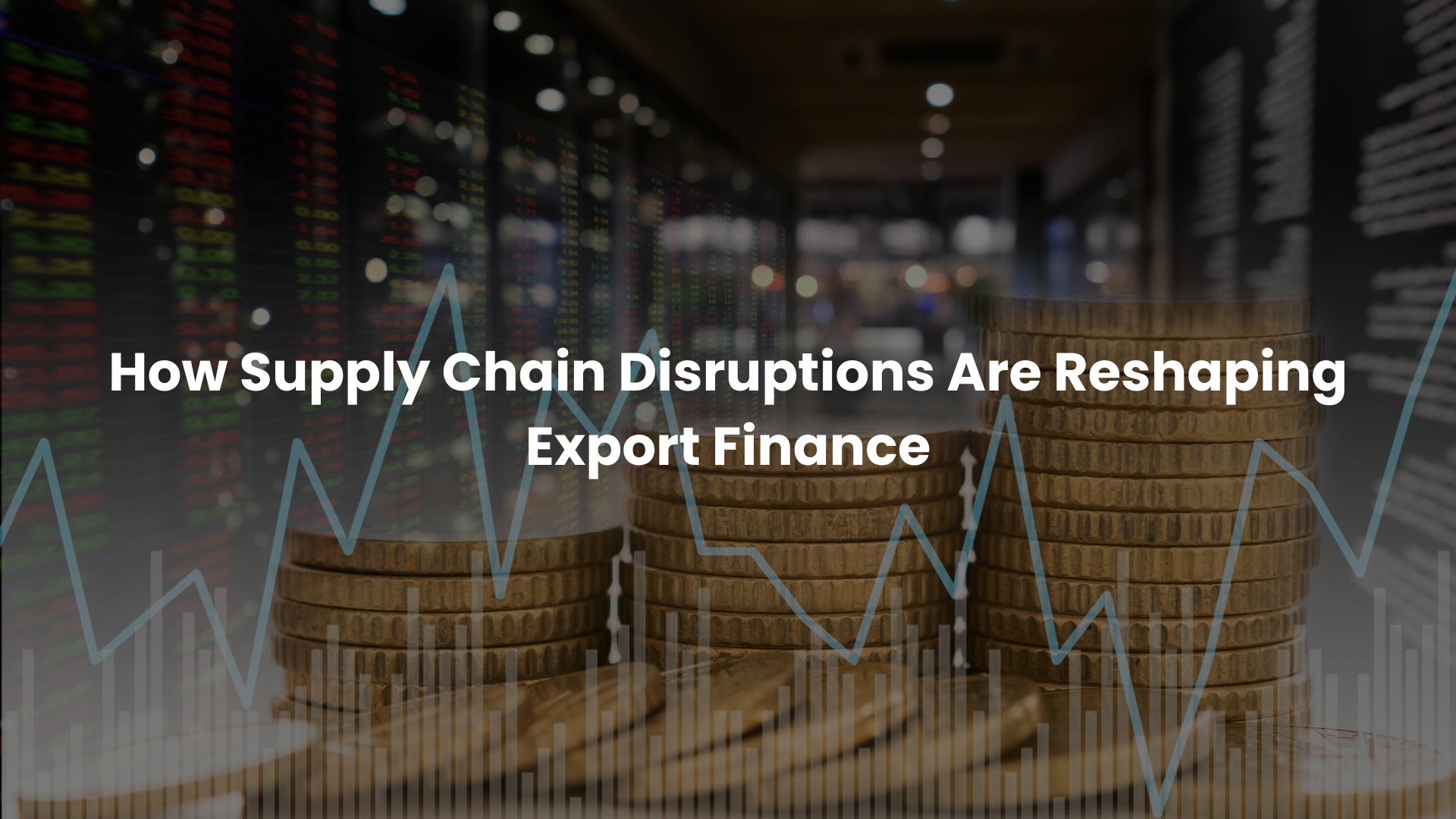Over the past several years, supply chains have been tested in ways few could have predicted. From the lingering aftershocks of the pandemic to geopolitical tensions, protectionist trade measures, logistics bottlenecks, and commodity shortages, the “just-in-time” model that once defined global trade has been forced into rapid evolution.
For exporters, these shifts have not only raised costs and extended timelines but have also transformed the way trade is financed. Export finance—long the bedrock of cross-border commerce—has entered a period of fundamental change, characterised by digital innovation, evolving risk management strategies, and structural reconfiguration of supply networks.
In 2025, these disruptions are no longer short-term crises to be weathered; they are ongoing realities that demand a more adaptive approach to export financing and global trade.

Rising Costs and Strained Trade Finance
The most immediate and visible impact of supply chain disruption is cost inflation. Transportation and procurement costs have climbed sharply, compounded by shipping delays and container shortages. Freight rates remain volatile, driven by bottlenecks at key transit points, new tariffs, and re-routed trade flows as exporters seek to avoid politically sensitive corridors.
This has a direct bearing on export finance. Higher input and logistics costs mean larger financing requirements, while extended shipment times tie up working capital for longer periods. For exporters, particularly those operating in volatile or high-risk markets, securing affordable trade credit has become more challenging.
Lenders, meanwhile, face their own difficulties: assessing creditworthiness in a world of unpredictable disruptions requires more rigorous due diligence, raising the overall cost of capital. The result is a more complex, expensive environment for exporters, and one that is particularly acute for small and medium-sized enterprises (SMEs).
The Shift Towards Digital and Flexible Finance Solutions
With traditional trade finance under pressure, exporters and financiers alike are embracing technology to bring efficiency, transparency, and resilience to cross-border transactions.
Digital platforms and fintech solutions are increasingly at the heart of this shift. Blockchain-enabled platforms allow secure, real-time sharing of trade documents, reducing fraud and administrative delays. Artificial intelligence tools support credit risk assessment, automate reconciliation processes, and flag potential supply chain vulnerabilities before they escalate.
Supply chain finance (SCF) programmes have also surged in popularity. By enabling suppliers to receive early payment at favourable rates based on the buyer’s stronger credit profile, SCF reduces liquidity stress and enhances supply chain stability. For exporters facing longer shipping times or unexpected delays, this immediate access to working capital has become indispensable.
In parallel, digital platforms are democratising access to export finance. SMEs, which often struggle to meet traditional banking requirements, now have alternative channels through fintech providers offering more flexible, technology-driven solutions.
Evolving Risk Management Strategies
Risk management has taken centre stage in export finance. With buyers in some regions facing heightened default risk, exporters and their financiers are turning to new tools and strategies to mitigate potential shocks.
- Trade credit insurance has grown in prominence, providing protection against non-payment and boosting confidence for exporters dealing with new or higher-risk buyers.
- Export credit agencies (ECAs) are playing an expanded role, offering guarantees and insurance that open doors to financing in jurisdictions that commercial lenders may shy away from.
- Structured trade finance and SCF solutions are increasingly being used to manage liquidity risk, ensuring exporters have cash flow even when supply chain disruptions delay revenue.
This layered approach to risk mitigation allows exporters to navigate volatility while maintaining access to competitive financing terms
Supply Chain Reconfiguration: Near-Shoring and Friend-Shoring
Another major consequence of supply chain disruption has been structural reconfiguration. Businesses are reassessing their dependence on single markets or vulnerable transit routes and pursuing diversification strategies.
Near-shoring—moving production closer to end markets—has gained momentum, as has “friend-shoring,” where supply chains are realigned towards politically allied or stable partners. Export finance has had to adapt, offering flexible instruments that support this reconfiguration of trade flows.
For example, financing structures now increasingly account for multi-jurisdictional sourcing, shorter but more fragmented supply chains, and alternative shipping routes. This adaptability helps businesses remain competitive even as geopolitical tensions or new regulations alter the global trade map.
Opportunities and Challenges for SMEs
For small and medium-sized enterprises, the challenges are especially acute. SMEs often face tighter credit conditions, higher financing costs, and limited leverage when negotiating with banks. Prolonged payment cycles and disruptions in supply chains can threaten their survival.
Yet, SMEs also stand to benefit significantly from the transformation underway. The rise of digital export finance platforms, alternative lenders, and SCF programmes has lowered barriers to entry. These solutions offer SMEs faster, more flexible financing while integrating risk management features once available only to larger corporates.
In this way, supply chain disruption has acted as both a challenge and a catalyst, forcing SMEs to adopt more modern, resilient financing practices that could strengthen their long-term competitiveness.
Looking Ahead: A More Resilient Export Finance Ecosystem
The export finance ecosystem of 2025 is one marked by adaptation. Disruption is no longer seen as an occasional external shock but as a constant factor shaping strategy. Exporters and financiers are responding with agility, leveraging digital solutions, rethinking risk, and supporting new supply chain models.
While costs remain elevated and uncertainty persists, the upside is a more resilient and innovative ecosystem. Those who can adapt—by embracing technology, building diversified supply chains, and aligning with flexible financing models—will not only weather disruptions but position themselves to seize new opportunities in global trade.
Export finance is, at its core, about enabling cross-border deals. In an era defined by disruption, its role as a stabiliser, innovator, and growth enabler is more critical than ever.
Global Banking & Markets
At Global Banking & Markets (GBM), we understand that today’s exporters and investors are operating in a world of unprecedented change. Our mission is to provide the events, insights, and networking infrastructure that connects decision-makers, unlocks opportunities, and drives cross-border commerce.
Through our conferences, forums, and platforms, we bring together financiers, corporates, policymakers, and innovators to explore the very trends reshaping global markets—whether it’s the digitalisation of trade finance, the evolution of supply chains, or the rise of new investment hubs.
By participating in GBM events, you gain more than just knowledge—you gain access to a community of peers and partners committed to navigating disruption and building sustainable growth.
If your organisation is ready to adapt, innovate, and lead in the new global trade era, GBM is where your journey begins.
We are the world leader in global markets-focused financing events in emerging markets. We bring complex markets together in one place at one time, facilitate informal networking & organise meetings which accelerate deal-flow. Connecting you with business partners and counterparties is at the heart of everything we do.
.png)

.png)

